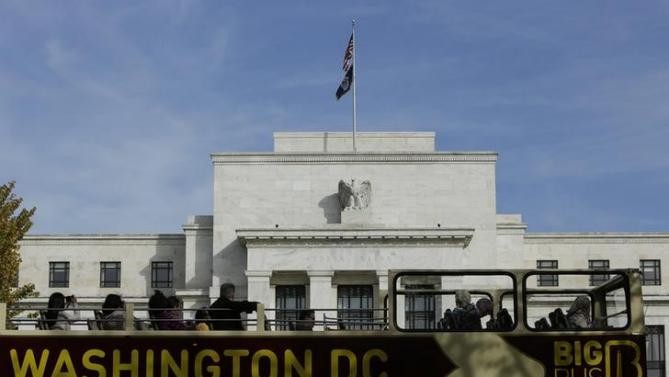Profit downgrades force investor reset
Post on: 15 Июль, 2015 No Comment

Ryan Newman drives the #31 Caterpillar Chevrolet. Caterpillar blames the plunge in oil prices for hurting its results. (Photo: Tom Pennington, Getty Images)
Maybe America isn’t immune to the world’s problems after all.
Indeed, the U.S. profit machine and stock market, once envied by the rest of the world thanks to an economic recovery that has outpaced its global peers, is showing signs of sputtering.
Both corporate earnings and the stock market took a big hit Tuesday, dragged down by key blue-chip Dow stocks slashing their 2015 sales and profit projections. At one point Tuesday, the Dow Jones industrial average was down more than 390 points, which put it on track for its worst one-day point drop in more than three years. But the Dow has trimmed its losses a bit and was down 235 points, or 1.3%, to 17,443 in afternoon trading. The broader S&P 500-stock index was faring better, off just 1%.
Stocks sank under the weight of the profit disappointments, which were sparked by weak growth abroad, a strong dollar that is cutting into profits earned abroad by U.S. companies and a continued hit to sales caused by plunging energy prices.
The outlook for 2015 earnings for U.S. companies took a dive Tuesday when bellwether blue-chip stocks, ranging from heavy-equipment maker Caterpillar to consumer products giant Procter & Gamble, reported disappointing quarterly earnings and confessed to Wall Street that sales and profits for the full year won’t come in nearly as strong as they originally forecast. Caterpillar blamed the plunge in oil prices for hurting its results. P&G fingered the strong dollar for cutting into its profits. The list of underwhelming earnings reports in the past 24 hours also includes software maker Microsoft and drugmaker Pfizer.
Fresh headwinds are blowing in from all directions.
U.S. multinationals are confronting a double whammy: weak global demand and a strong U.S. dollar, says Joe Quinlan, chief market strategist at U.S. Trust. While some market pros believe the U.S. is insulated from foreign troubles, America can catch a cold from sick economies that are far away. The U.S. is very open, not closed, to global forces, and weakness overseas will be a problem for U.S. equities.
Making matters worse Tuesday was a surprising weaker-than-expected reading on durable goods orders last month, which suggested U.S. companies are being cautious before adding more refrigerators and dishwashers to their inventories.
Heading into 2015, the U.S. economy and American companies were touted as the envy of the world. But Wall Street must now rethink that calculus as global forces start to impact negatively on the positive story at home. Many investors are downsizing their expectations for earnings growth, while others are rethinking their bullish outlook for U.S. stocks.
Stocks are resetting right now, says David Kotok, chief investment officer at Cumberland Advisors. Investors must adapt to global low rates, cheap oil, earnings adjustments from currency changes. That is the new regime.
The earnings growth story is being called into question amid the fallout from the unexpected plunge in oil and continued strength in the U.S. greenback, which has been exacerbated by foreign central bankers in places like Europe taking steps to weaken their own currencies with stimulus programs designed to fight off inflation and jump-start growth.
Wall Street analysts have revised down their U.S. profit estimates for 16 straight weeks, according to Gina Martin Adams, institutional equity strategist at Wells Fargo Securities.
And that consistent lowering of profit expectations is starting to show up in lower growth expectations for coming quarters. Profit growth for the just-completed fourth quarter is tracking at 3.3%, according to Thomson Reuters I/B/E/S, putting the quarter on track for the slowest quarter of profit growth since the third quarter of 2012. What’s more striking is how quickly the growth projections have come down: On Jan. 1 analysts expected fourth-quarter growth of 4.2%, and back on Oct. 1 the expectation was for 11.2% growth.
After three years of an upward tilt, S&P 500 forward (earnings) expectations have stalled and rolled over a bit, says John Manley, chief equity strategist at Wells Fargo Funds Management. He believes the negative drivers, a weak dollar and falling oil prices, are transitory, and that the U.S. consumer will continue to pull the world out of its economic doldrums.
A similar sharp slide in growth expectations is now occurring for 2015. Analysts now expect first-quarter 2015 profit growth of 1.9%, down from 5.3% on Jan. 1. Earnings growth forecasts have now been slashed for all four quarters this year. Full-year 2015 profit growth is now forecast at 5.7%, down from 8.1% on Jan. 1.
Adjustments for the impact of lower oil prices and a stronger dollar have not yet been priced into all profit forecasts, adds Alan Skrainka, chief investment officer at Cornerstone Wealth Management.
So what went wrong? What’s clouding the U.S. profit outlook?
• A strong dollar. Sure, a strong dollar reflects a strong U.S. economy. But there are also unintended consequences. A strong dollar, for example, means foreign-sourced earnings of U.S. companies are lower when reported in U.S. dollars.

The pain is starting to show up in fourth-quarter results. More than 20% of companies in the S&P 500-stock index that have reported earnings have blamed a strong dollar as a negative drag on their profit results, says Christine Short of earnings tracker Estimize.com.
This is a dollar (problem) much more than the global economy (issue), says David Kelly, chief market strategist at J.P. Morgan Funds. His data show that the U.S. dollar was up 1.7% against a basket of foreign currencies in the third quarter of 2014, and rose another 9% in last year’s fourth quarter.
This is a major drag on S&P 500 earnings, given that over 40% of revenues come from outside the U.S., Kelly says.
Still, he doesn’t expect a noticeable slowdown in global growth this year, and expects lower oil prices to serve as a tax cut for consumers and to support growth. He says he remains positive on U.S. stocks, noting that fresh readings on consumer confidence and new-homes sales Tuesday offset the gloomy news on durable goods orders.
A strong dollar also makes it tougher for U.S. companies to compete against their foreign counterparts in similar lines of business, as U.S. goods and services are more expensive for those buying them with cheaper currencies, adds Jack Ablin, chief investment officer at BMO Private Bank.
• Energy woes. Caterpillar said lower oil prices had cut into its business in oil-related industries. And those types of earnings hits are in addition to the profit declines suffered by companies that derive all of their profit from the energy patch.
Companies in the S&P 500’s energy sector are expected to see a 25% contraction in fourth-quarter profits, down from an estimate of a 6.6% gain back on Oct. 1, 2014, according to Thomson Reuters I/B/E/S. Weakness in energy is dragging down the market’s overall profit growth number.
Certainly, lower oil prices are creating a mess, says Short of Estimize.com. Initially, it was thought that the benefit from lower gas prices for retail, airlines and transportation names would be enough to offset weakness (in the energy sector). But as downward revisions continue to come in for the big players like ExxonMobil and Chevron, all out later this week with their earnings, it appears that might be harder to do.
• Weak global growth. The U.S. is not totally decoupled from the rest of the planet, says Short of Estimize.com. What ails our neighbors abroad does affect us, eventually.
No way, the U.S. is not immune, especially the S&P 500, Short adds.About 40% of S&P 500 sales come from out of this country. These are big multinational companies we are talking about, and they count on global strength to succeed.














